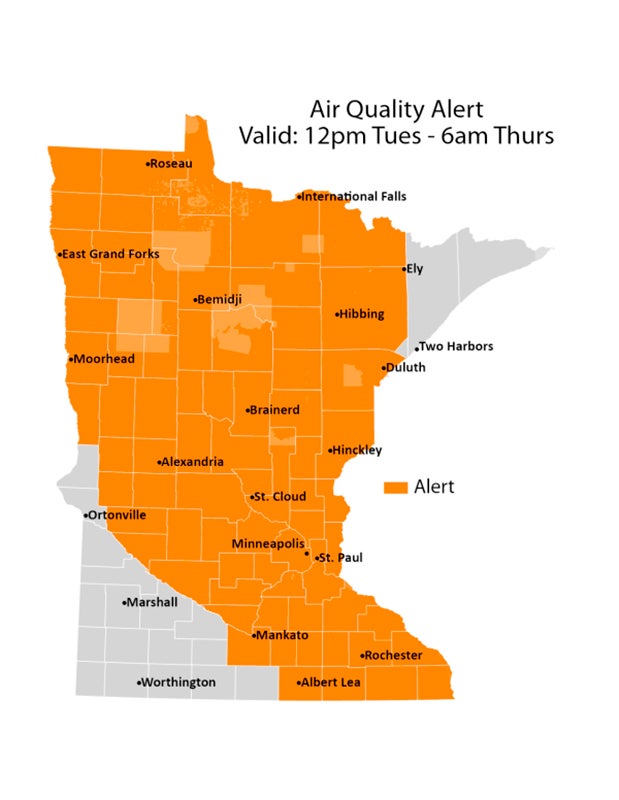Air quality alert issued due to wildfire smoke
Published 6:07 pm Tuesday, July 20, 2021

- An air quality alert is in effect through Thursday morning, according to the Minnesota Pollution Control Agency. Provided
|
Getting your Trinity Audio player ready...
|
The Minnesota Pollution Control Agency has issued an air quality alert for northern, central and southeast Minnesota effective Tuesday through 6 a.m. Thursday.
Heavy smoke from wildfires located north of the Canadian border in Ontario and Manitoba was transported into northern Minnesota overnight by northerly winds. On Tuesday, fine particle levels were expected to remain in the Purple AQI category, a level considered very unhealthy for everyone, across north central Minnesota. Heavy smoke will remain in this area through Wednesday. On Wednesday, fine particle levels were expected to be in the Red AQI category, a level considered unhealthy for everyone, across northern Minnesota.
Smoke was expected to mix down to the ground over northern Wisconsin and move into central and southeast Minnesota Tuesday afternoon. Fine particle levels were expected to reach the Orange AQI category, a level that is considered unhealthy for sensitive groups, Tuesday across central and southeast Minnesota and remain in the Orange AQI category Wednesday. Fine particle levels will begin to improve across the state beginning Wednesday evening as winds will begin to move the smoke out of the state. By Thursday morning, air quality should be improved below alert levels statewide.
There are people who are more likely to be affected when fine particle pollution reaches an unhealthy level.
- People who have asthma or other breathing conditions like chronic obstructive pulmonary disease (COPD).
- People who have heart disease or high blood pressure.
- Children and older adults.
- People of all ages who are doing extended or heavy, physical activity like playing sports or working outdoors.
Air pollution can aggravate heart and cardiovascular disease as well as lung diseases like asthma and COPD. When the air quality is unhealthy, people with these conditions may experience symptoms like chest pain, shortness of breath, wheezing, coughing or fatigue. People experiencing any of these symptoms, should use their inhalers as directed and contact their health care provider.
- Everyone should take precautions when the air quality is unhealthy.
- Take it easy and listen to your body.
- Limit, change, or postpone your physical activity level.
- If possible, stay away from local sources of air pollution like busy roads and wood fires.
- If you have asthma or other breathing conditions like COPD make sure you have your relief/rescue inhaler with you.
- People with asthma should review and follow guidance in their written asthma action plan. Make an appointment to see your health provider if you don’t have an asthma action plan.
- The main sources of fine particle pollution is any activity that uses fuel.





